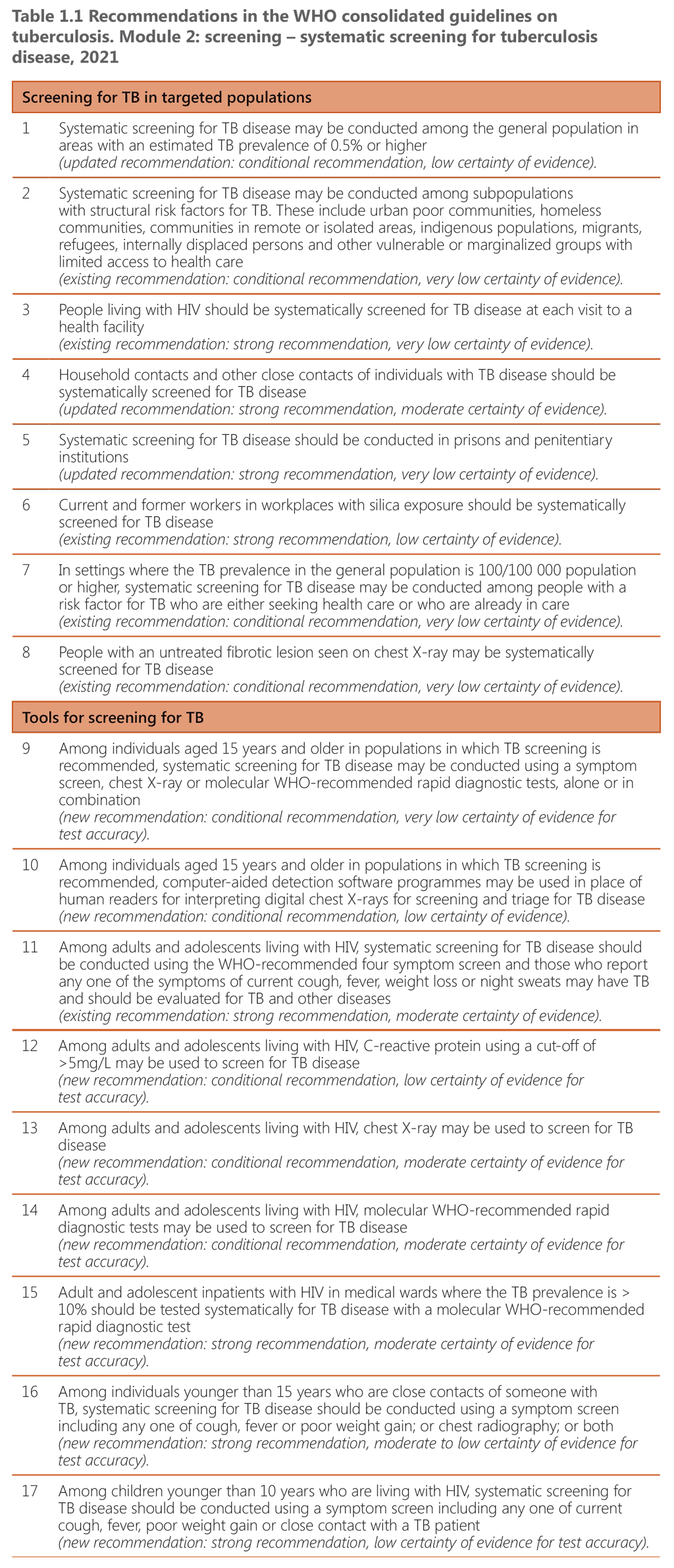Book traversal links for 1.1 Rationale for systematic screening for TB disease
Tuberculosis (TB) is a major yet preventable airborne infectious disease. About one fourth of the world’s population is infected with TB bacilli, the vast majority of whom have no disease (1, 2). In 2019, an estimated 10 million new TB cases emerged worldwide, and more than 1.4 million people died of TB, making it the leading single infectious disease cause of death that year (2). Of the estimated 10 million people who fell ill with TB in 2019, TB was not diagnosed in an estimated 2.9 million, and they were not enrolled in quality-assured TB treatment (2). Additionally, many people delay seeking care for their illness or are misdiagnosed before they are eventually diagnosed and treated (3) (see also Web Annex B of the screening guidelines).
The aim of screening (or active TB case finding) is to detect TB disease early in order to minimize avoidable delays in diagnosis and initiation of treatment, thereby reducing the risk of unfavourable treatment outcomes, health sequelae and the adverse social and economic consequences of TB for individuals and their families. In addition, screening reduces TB transmission in a household, workplace, school or other community setting by removing people with prevalent disease and shortening the duration of infectiousness. This reduces the incidence of TB infection and consequently the incidence and prevalence of TB disease. When implemented with an effective algorithm for screening and diagnostic testing and when integrated with TB preventive treatment (TPT) for people without TB disease at risk of progression, there is a higher likelihood that the health of individuals and the community will be improved. Testing for TB infection with a TB skin test or interferon-g release assay to inform decisions about TPT is not part of screening and is discussed in separate normative documents (4, 5).
Detecting TB only among people who present to health facilities is not enough to find all people with TB disease. The remaining case-detection gap, particularly in certain vulnerable populations, and the persistence of diagnostic delays and resulting continued transmission in the community, indicate the need for a more active approach to early detection of TB. This justifies systematic screening of selected risk groups and populations for TB disease.
The WHO End TB Strategy includes systematic screening for TB disease in high-risk groups as a central component of its first pillar, to ensure early diagnosis of all persons with TB (6, 7). In 2021, WHO has updated the TB screening guidelines from 2013 to help countries in implementing this critical programmatic component. This operational handbook accompanies WHO consolidated guidelines on tuberculosis. Module 2: screening – systematic screening for tuberculosis disease and provides additional practical details for applying the guideline recommendations by identifying priority risk groups and selecting the appropriate screening approaches in the light of new evidence. The updated recommendations are summarized in Table 1.1.

TB: tuberculosis.
 Feedback
Feedback